Protect your car's paint
Your new or new-to-you car looks beautiful. But will it stay that way?
How do the elements affect your car?
What will it look like a year from now, or five years from now, after rocks, road debris, bug splatter, bird droppings, tree sap, UV rays, acid rain, sand, salt, and a host of other environmental contaminant get a shot at marring your car’s paint.
Keep your car looking like-new with LLumar Paint Protection Film from Exclusive Detail.

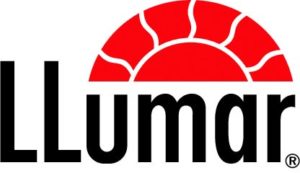
The benefits of paint protection film from Exclusive Detail
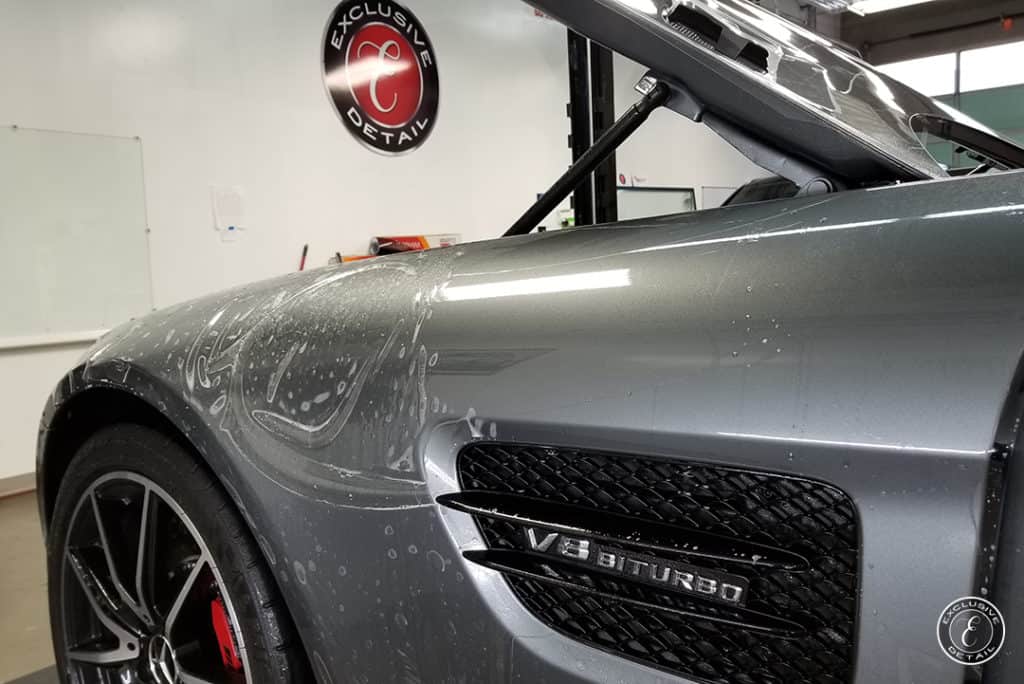
Unmatched Protection
Paint Protection Film film stops rock chips, swirl marks, chemical etching, oxidation, and more. It is the best defense you can add to your paint.
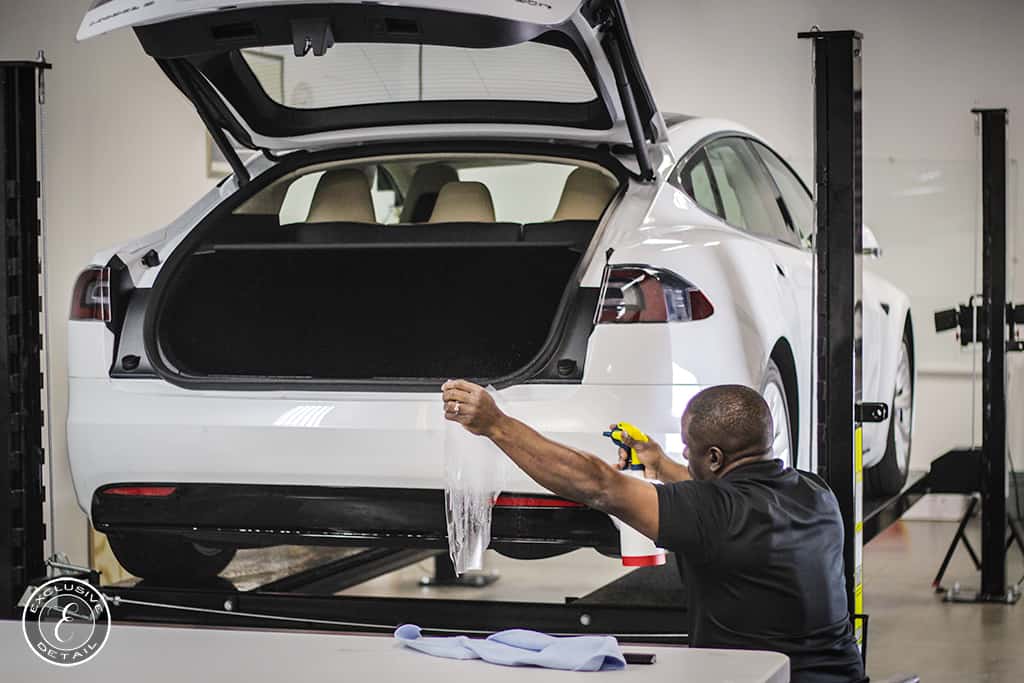
Expert Installation
At Exclusive Detail, we are devoted to quality above all else. That’s why we are factory trained and certified by all major film manufacturers.
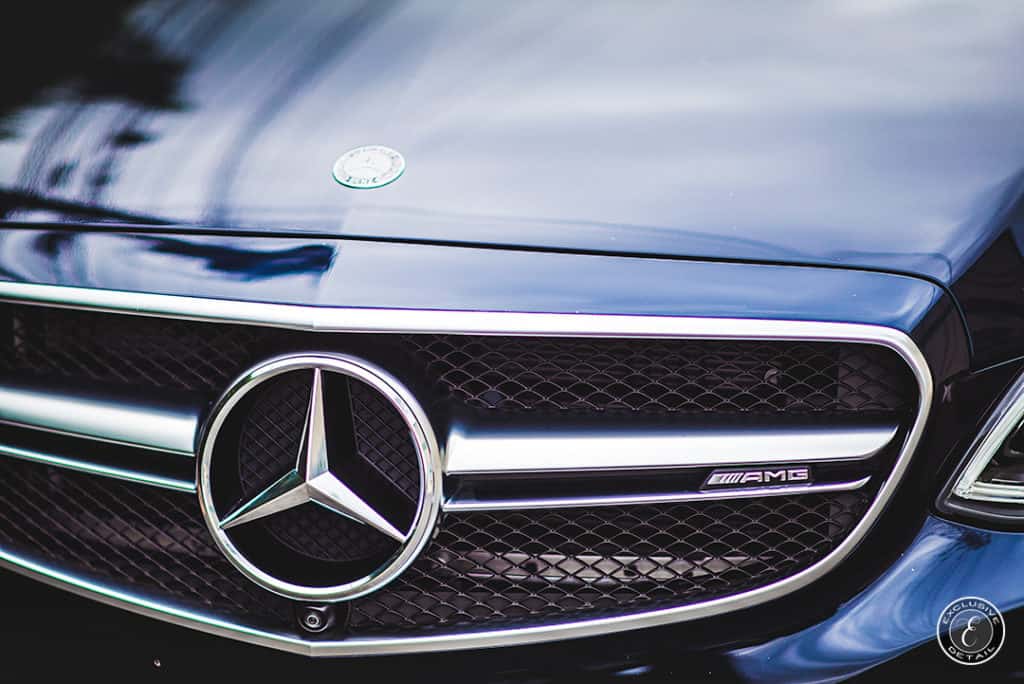
Invisible Finish
Paint Protection Film is invisible to the naked eye, and will not inhibit the gloss of your car’s paint. It is the best protection you’ll never see.
Getting to know Automotive Paint Protection Film: What clear bra does for you car

Automotive Protective Films go by many different names: Clear Bra, Clear Mask, Invisible Shield, Clear Wrap, Rock Chip Protection, Car Scratch Protective Film, etc. The most common terms for car protective films are simply Paint Protection Film and Clear Bra, and we’ll use those two terms interchangeably in this article.
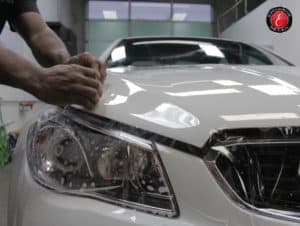
All that to say, applying a quality Clear Bra is something you can do today in order to help maintain the look and quality of your car’s paint for years to come.
Now, let’s remember, while Paint Protection Film is powerful and it’s benefits are numerous, it is not a cure-all when it comes to keeping shiny cars shiny. Nothing will make your car bullet proof. There are rocks that can puncture a Clear Bra. If bird droppings or bug splatter are allowed to sit on film for a long period of time, it can damage the film. After applying Paint Protection Film, you will still have to wash your car. There is no one-stop-shop solution to perfect and unending gloss. That’s not what Paint Protection Film promises. Rather, Paint Protection Film promises that after application, when the forces of nature fight against the depth and clarity of your car’s paint, the paint will fight back. You will add value to your car by protecting it from damage you could not have avoided otherwise. In the words we used earlier, Paint Protection Film keeps your car looking better for longer.
Where did the Paint Protection Film come from? The history behind the clear bra
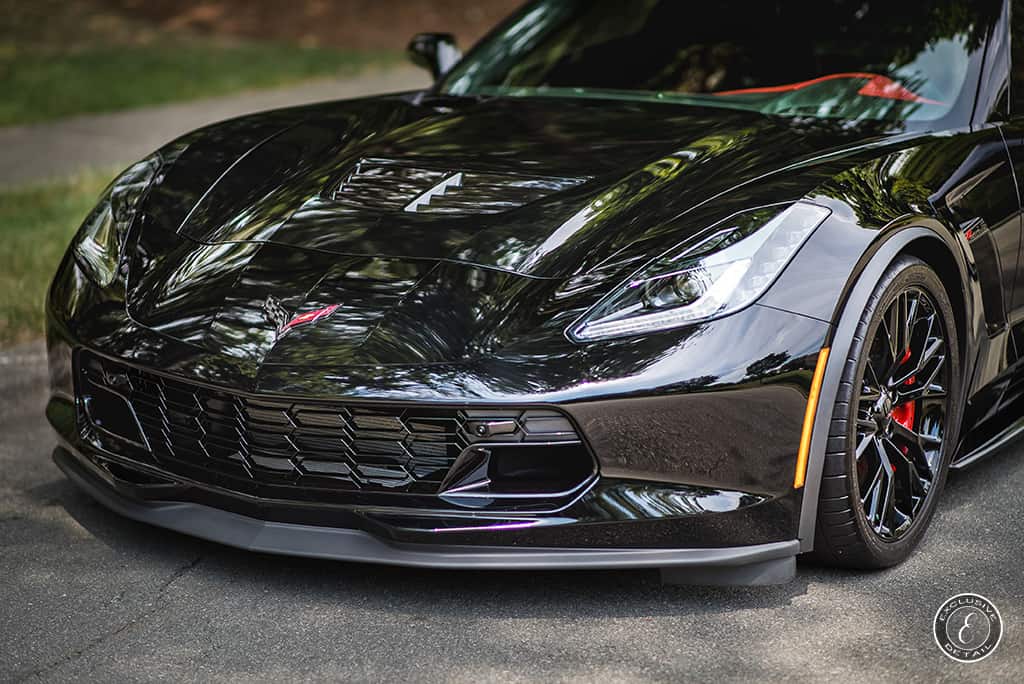
Whenever you’re getting to know someone or something, it’s helpful to get some background information. So how about a little bio on the technology behind Clear Bra.
Automotive Paint Protection Film is a transparent, urethane material. Urethane technology was developed during the Vietnam War, when U.S. helicopters were crashing due to damage on the leading edge of rotor blades. The military worked with 3M to develop a technology that would be lightweight, but resilient, and could be replaced at the fraction of the cost of replacing an entire rotor blade (or a crashed helicopter for that matter). In the 1970s, the military expanded its use of urethane films to the noses of fighter jets, and because the technology has been so successful and efficient, 3M still manufactures a variety of urethane films for military and aerospace purposes to this day.
In the 1980s, NASCAR saw how urethane technology could be beneficial in protecting the front half of race cars. Advertisers pay a lot of money to get their decals plastered on the front of fast cars, and I’m sure they weren’t too keen on those decals getting peppered by rock chips.
During the 1990s, urethane films became available to the general consumer for automotive protection. Since then the technology has been continually refined and improved, and has been enthusiastically welcomed across the automotive industry. Today Paint Protection Films are OEM approved by virtually all automotive manufacturers.
What is used to make Paint Protection Film? The technology behind clear bra
If you’re going to wrap something around your fine new vehicle, you’ll want to know not only where it came from, but what it is exactly. Let’s talk a little bit more about what’s inside a sheet of Paint Protection Film. The key ingredient is urethane, a powerful and versatile polymer made from carbamate links. As a compound, it has unique attributes: It is lightweight and transparent, like plastic. But unlike plastic it is not brittle or susceptible to tears and cracks. It has a high resistance to impact, abrasion, and corrosion. It is also incredibly flexible, and can return to its natural shape after being stretched or disfigured.
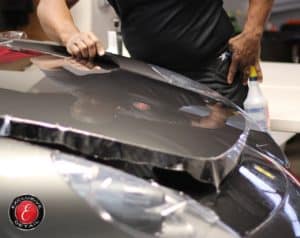
The applications of urethane as a polymer are broad, but today we are talking about your car, and for the benefit of your car, urethane serves as a central ingredient in a clear film around 8 mils (0.008 inches) thick.
In addition to the central layer made up of urethane (or polyurethane), a quality Paint Protection Film has at least two other layers. First, the top is lined with clear coat made up of elastomeric polymers. As we mentioned above, this is the part that enables a good film to heal itself from small scratches. But it does much more. The clear coat on a good film will have a low surface energy, which prevents organic compounds, like bugs or bird droppings, from bonding with the film.
Second, the bottom is lined with an acrylic adhesive that is designed to be flexible, so that it can be stretched and wrapped around every contour or your vehicle; durable, so that the film will not detach over time; and invisible, so that it will not affect the look of the paint.
Are there any liabilities? What about yellowing, blistering, or peeling?
After being properly applied, Paint Protection Film is invisible to the naked eye and does not inhibit the depth and clarity of your factory paint. But what about over time? If you’ve done some reading around the Internet, you may have encountered individuals documenting defects that have appeared in their Clear Bra after a certain amount of time. In particular, some people who have purchased an after-market Clear Bra have noted yellowing, blistering, and peeling. For you to make an informed decision, it’s important to know what’s behind each of these de generations and what you’ll need to do to avoid them.
Yellowing
An early complaint against Paint Protection Film was that after time it began turning yellow, which, of course, has a significant impact on the look of a vehicle’s paint, especially for white cars. This complaint was particularly prevalent when Clear Bras first started being applied to consumer automobiles. After researching the matter, film manufacturing companies found that the yellowing effect came from the adhesive that was used to bind a film to the body of a car. UV exposure was oxidizing the adhesive, which lead to discoloration. Upon this discovery, companies began researching alternative adhesives, and began using the acrylic adhesives that are found on most Clear Bras today. This newly developed adhesive is UV resistant, and will not oxidize or discolor. This effectively resolved the discoloration concern for Paint Protection Film. Today, if you put a sub-standard film on your car, it may use an inferior adhesive and lead to discoloration. But all quality professional film manufacturers, like LLumar, use a more recently developed adhesive that does not discolor due to UV exposure.
Blistering
A Clear Bra is said to “blister” when small air bubbles are found underneath the film. The blistering effect has everything to do with the quality of application. Typically, an air bubble occurs because a contaminant is trapped under the film, creating separation between the body of the vehicle and the Clear Bra. Overtime this can lead to growing bubbles under the film. A proper application process includes hairsplitting attention to the vehicle’s surface before any film touches paint. This includes washing, claying, and polishing. Moreover, a professional application center creates a controlled environment where the air can be filtered to remove contaminants that could potentially get trapped underneath the film. Thus, a sub-par film and unprofessional application can lead to blistering. But when a quality film is properly applied by an experienced technician, the risk is at most very minimal.
Peeling
Peeling is, of course, when the edges of a film begin to peel away from the paint. It can result from a sub-standard film or unprofessional application, but it is often the result of improper care. Specifically, if you are using a pressure wash to clean a car with Paint Protection Film, it is important to stay at least 12 inches away from the film, and particularly from any exposed edges. If a pressure washer is directed at the edge of a Clear Bra, it can begin lifting the film, which leads to peeling.
In sum, the complaints against Paint Protection Film do arise from real-world situations. However, as we have outlined, these situations have specific causes that can be averted. If you purchase a high quality film (like LLumar Platinum Paint Protection Film), have it installed at a reputable shop, and properly care for your protected vehicle, then the risk of defects like yellowing, blistering, or peeling are next to none. And if any of those things do occur, you will be covered by a ten year manufacturers warranty.
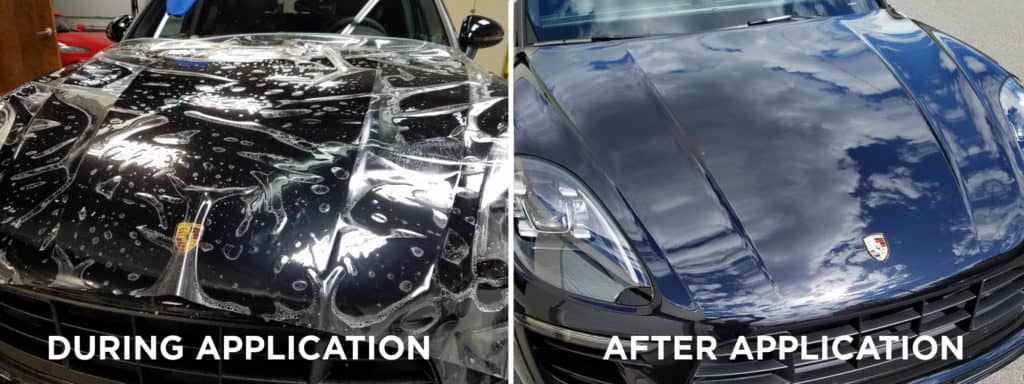
Summing it up: Drive Protected
So when it comes to keeping your new vehicle looking new, Paint Protection Film is the most comprehensive and longest-lasting solution. If you have additional questions and are outside of NC or SC, browse some of our Paint Protection Film blog posts. Fill out our contact form if you have any questions or if you are ready to schedule an appointment.
You’ve now been formally introduced to Paint Protection Film. We hope this is just the beginning of a long and rewarding friendship!

